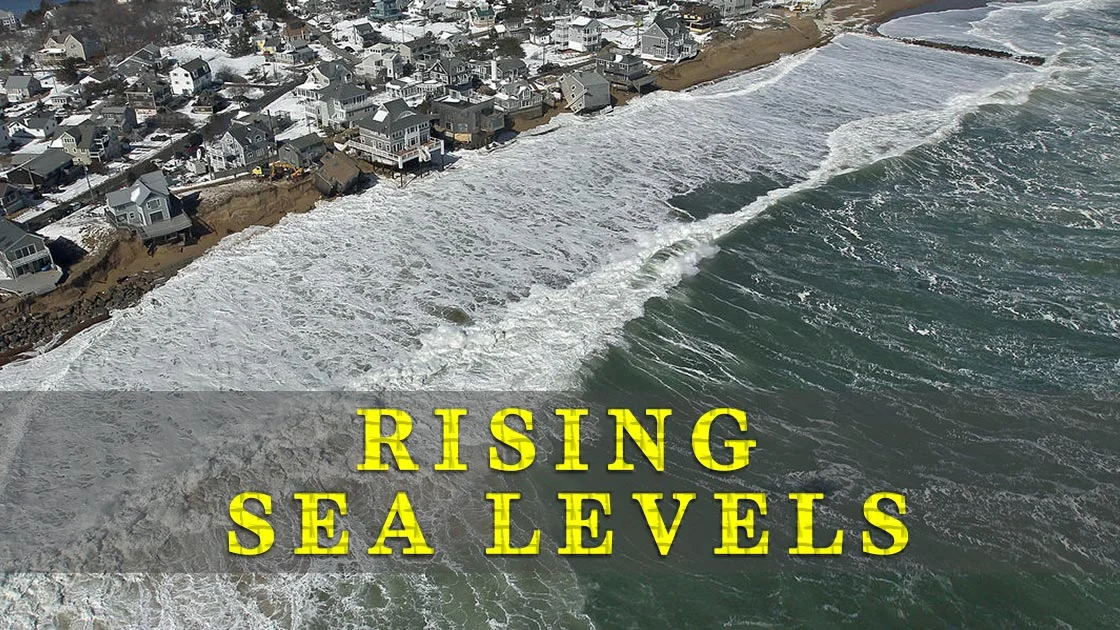Loss of human life, property, livestock, marine life crops, food scarcity, rising conflicts and diseases. These are some of the endless consequences of rising sea levels. Rising seas is one of the effects of climate change- a phenomenon which is drastically taking place in recent years accelerated due to human activities, particularly greenhouse gas emissions in the atmosphere. Sea level rise is directly linked to climate change and global warming. We all know that water has a higher heat absorbing capacity than land, water requires more heat to warm up. So, the excessive heat of the atmosphere is absorbed at a larger extent by the oceans. To visualize the extent, about 90% of the heat of the atmosphere is absorbed by the oceans while 1% of the trapped heat stays in the atmosphere. Therefore after absorbing this heat ocean waters expand, taking up more space than was required previously. This gives us the first reason. Secondly, as the global temperatures are soaring, the effect is seen widely on the cryosphere which makes up the frozen waters of the earth. A warm environment hastens the process of melting and thawing. According to the natural cycle, ice from glaciers melt in summers and gets snow again in winter. But, due to climate change, this natural cycle is disrupted causing extended summers, late and short winters. Consequently, increasing volume of water in seas. Furthermore, this raises the problem of frequent storms since warmer water vaporizes more quickly. Also, some researchers have said that hurricanes are getting more intense and wetter due to climate change. Countries like Haiti, which are already poor are more vulnerable to such hurricanes. There is a common consensus that sea level rise of between 1.7 and 3.2 fett due to global increase in temperature by 1.5 degree Celsius is possible by 2100 and several hundred million people will be exposed to it.
High temperatures not only threaten human life but ecosystems and delicate ocean life like coral reefs which bleach out and disrupts the food chains. Pollution- air, water, land has already shown us how animal life gets devastated due to human activities. Since 1993, there has been two times rise in sea levels compared to the long term trend. Rise in carbon dioxide levels in the atmosphere causes ocean and sea waters to absorb it and form carbonic acid which leads to its acidification resulting in low calcium carbonate formations directly affecting species such as oysters who cannot form their shells and skeletons. Other consequences such as coastal erosion, contamination of fresh waters, damage to the fishing industry, loss of species, etc. will be very prevalent. In the Arctic region over 4 million people live permanently, their lives depend on the food and economic activities they get and carry out due to the peculiar nature of their ecosystem. Melting of Arctic ice not only disrupts their food availability but also will impact the tourism industry in the future. The permafrost Arctic region has large amount of organic carbon dioxide locked up. Thawing can result in the release of this carbon dioxide adding upto huge volumes in the air.
On the other hand, countries with vast coastlines such as India, China, Bangladesh, Yemen, UAE, Indonesia, etc. are more prone to the risks. Their coastal communities are vulnerable to these climatic changes. Among them, the poorer strata of society is the most vulnerable. In these times, rising sea levels have already caused people to dislocate and in future, a large number of people will have to relocate due to vanishing of their lands and houses by more frequent floods. Because of poverty communities may fail to take essential steps to protect themselves. Policies must be made for such people locally and globally like better management of fisheries. Therefore, governments on global level should join hands and help formulate policies for climate refugees, better job opportunities, education and healthcare. Since, the effects are global, the problem needs to be handled on a global scale such that no country is left behind due to economic conditions. According to the IPCC’s special report on oceans and cryosphere in changing climate – “the success of adaptation of coastal communities will depend upon funding, capacities and institutional support”.
Sustainable practices, comprehensive policies, honest implementations are required today. Environmental ways of mitigating rising seas include restoring mangroves. Mangroves are an outstanding tool for combating the effects of hurricanes and floods. It prevents shorelines against strong cyclone winds and also prevents erosion as its entangled roots stabilizes sediments. Afforestation and reducing carbon footprint is the need of the hour. Among engineering solutions building sea walls, water pumps, surge barriers and overflow chambers to prevent water to come in. Resilience measures such as good warning systems, relocating people from high-risk areas, upgrading existing infrastructure, ensuring food supplies in times of distress and educating people about safety measures in case calamity hits.
